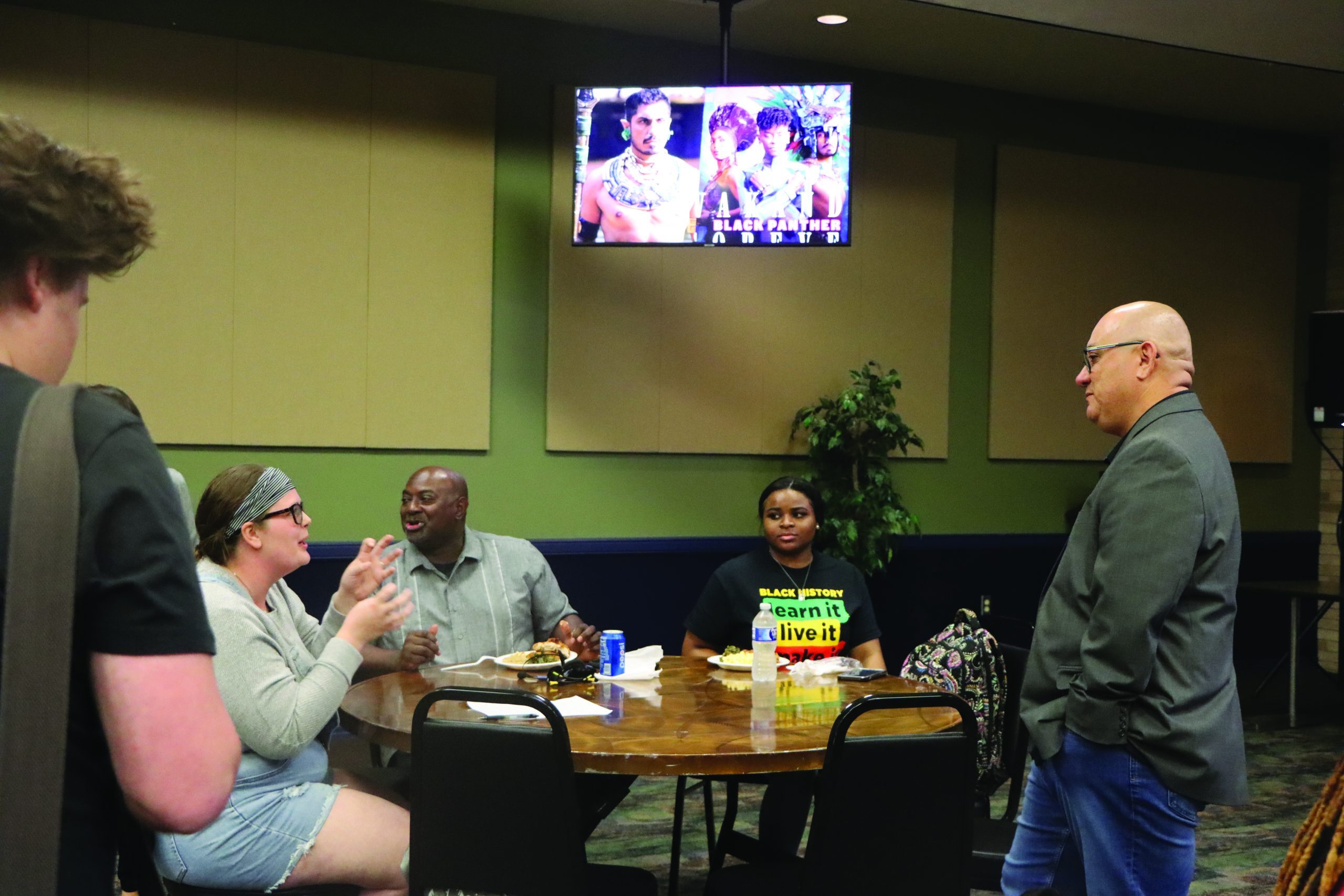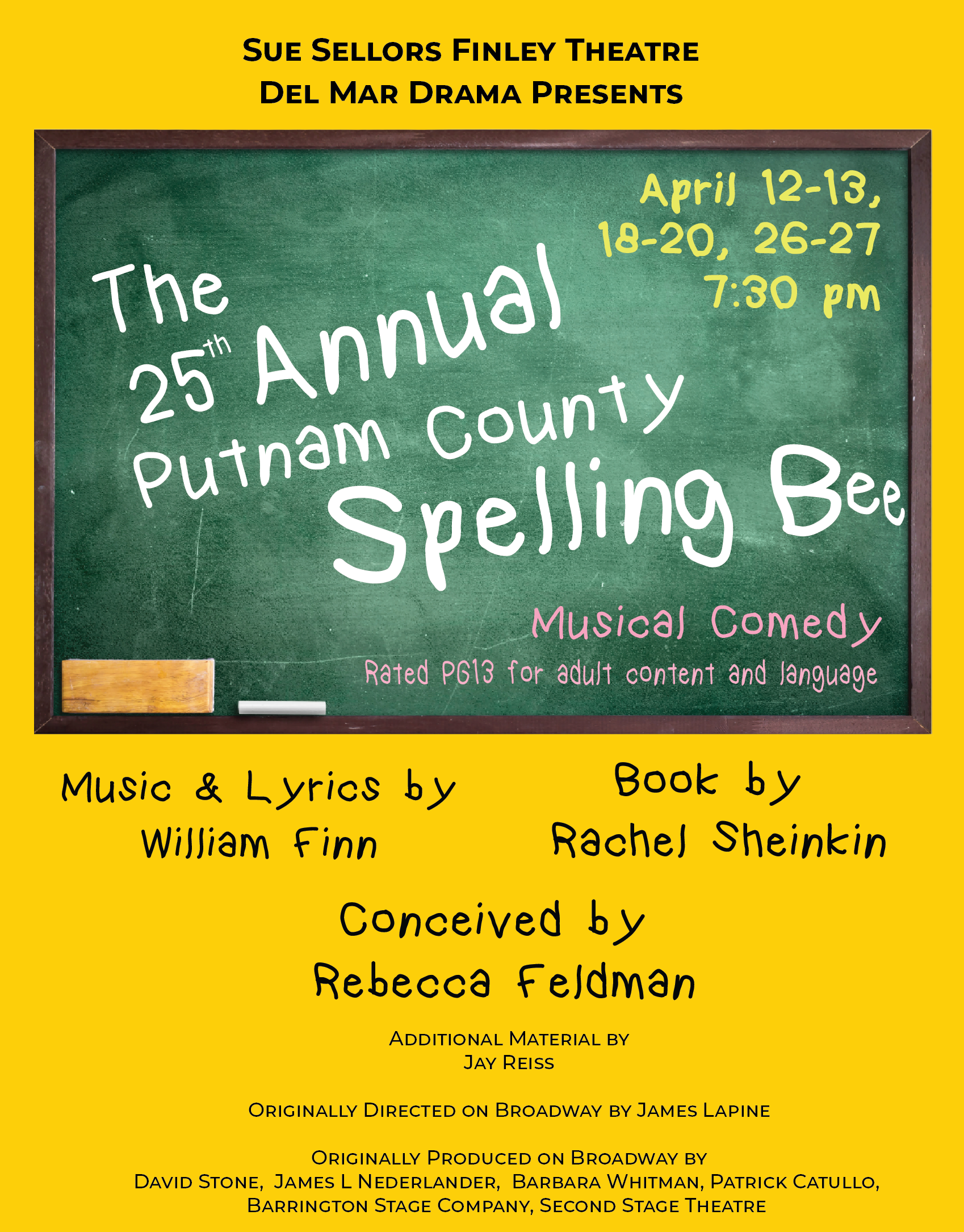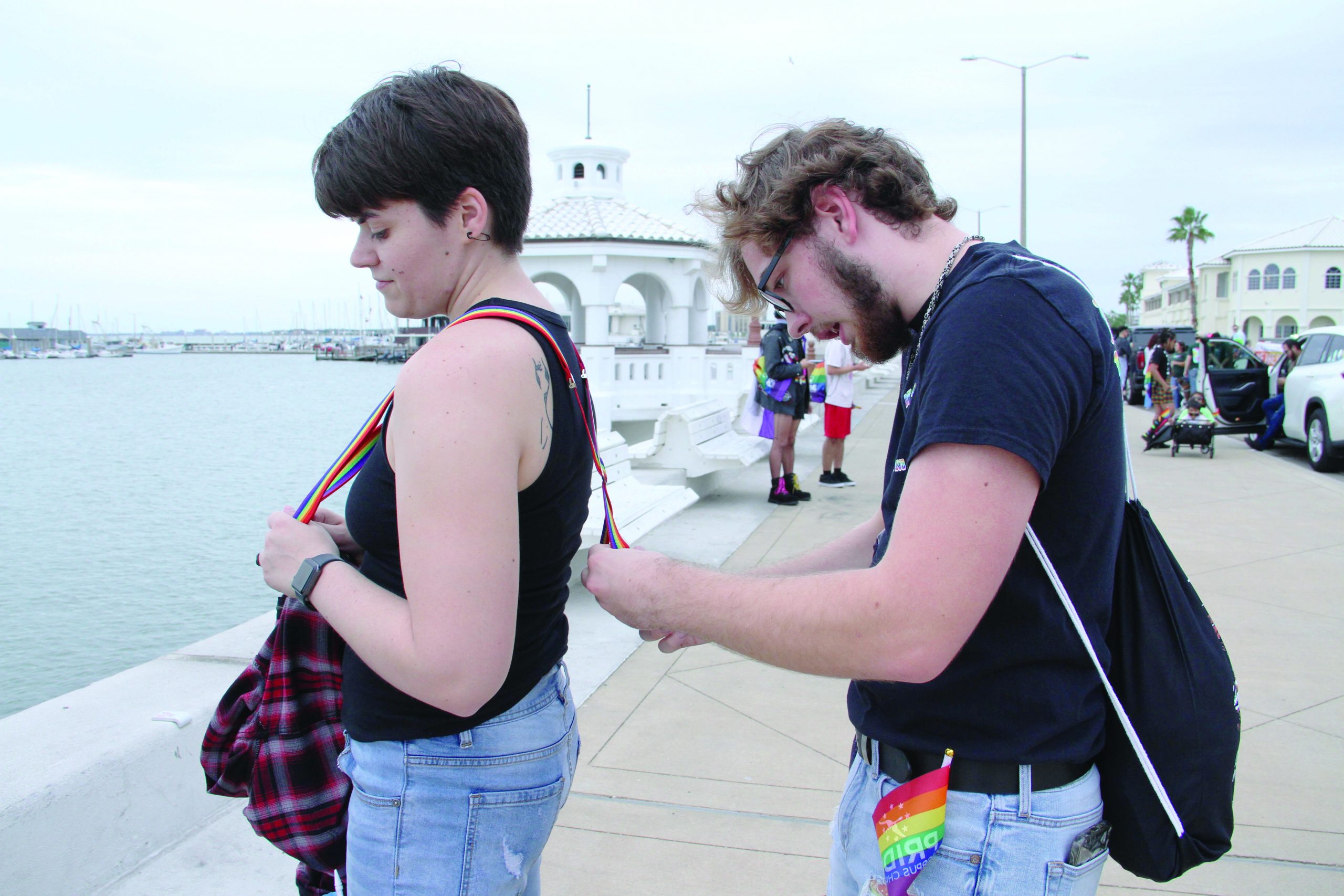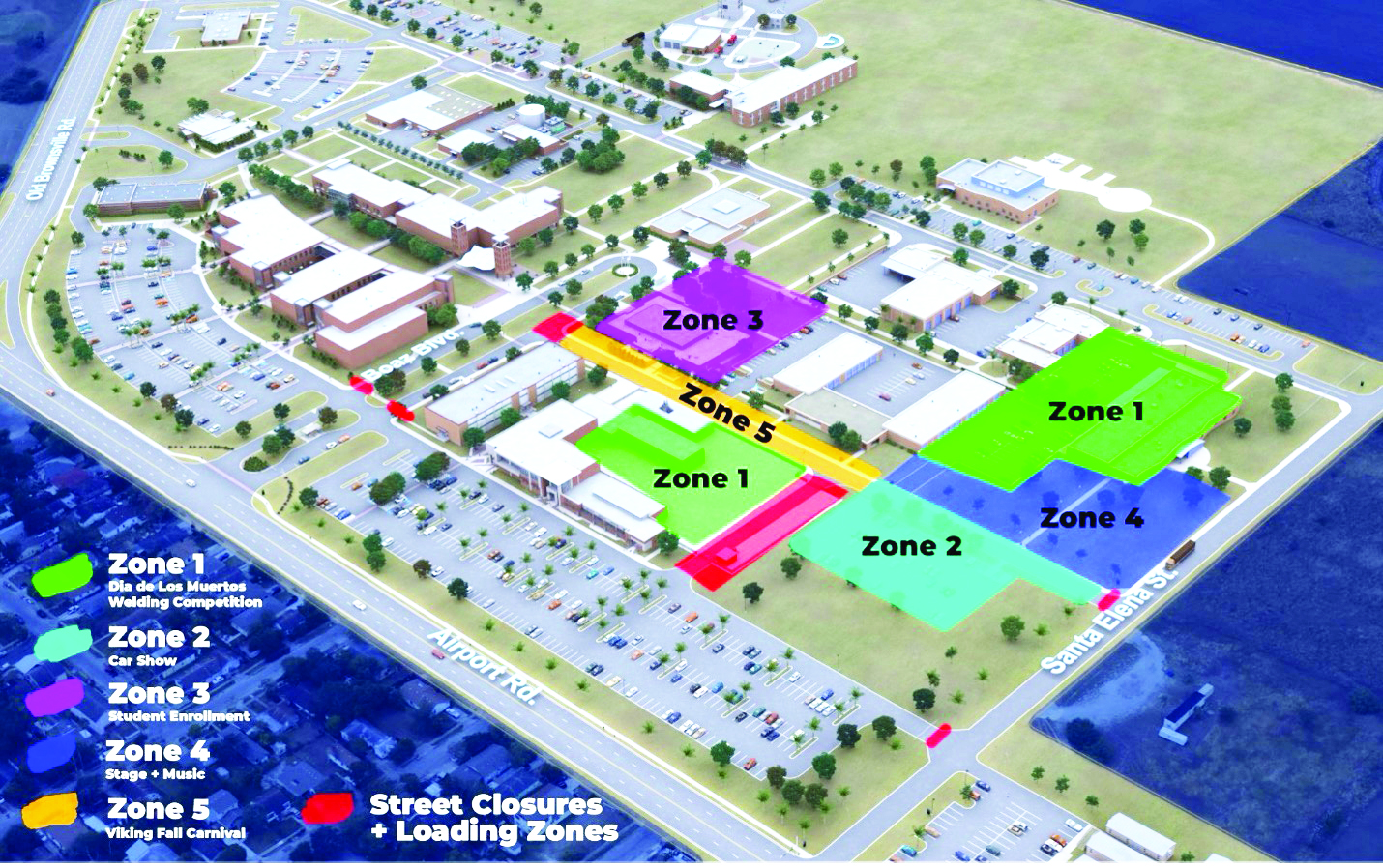Alberto Rodriguez addressed the elephant in the room while giving a presentation for Black History Month.
“You might be wondering, ‘Why is this Latino talking about African American History?’… Well, I think, as a scholar, we have been studying slavery the wrong way…brown people have a lot in common with black folks…,” Rodriguez, associate professor of history from A&M Kingsville, said at the Feb. 27 event at Heritage Campus.
Throughout his presentation, Rodriguez mentioned how black and brown people have such a rich history with their connection to one another.
“With these kinds of conversations, people approach me, they ask, ‘Aren’t you ever attacked in your classes because of CRT?’… I’m a professor,” Rodriguez continues, “This is why I do this. I’m not going to stop.”
CRT stands for Critical Race Theory.
In the 21st century history has mainly told stories by its victors leaving out the lives of the Indigenous and African people who helped create what we now know today as the United States of America.
Starting when the Underground Railroad went South, rural black people, near the border lands, 1850 to 1900s, used the word ‘blaxican’ to identify their mix of black and Mexican race.
Rodriguez looked further into South Texas’ small town of Brownsville revealing photos of African-American married couples during the years of 1900 and 1910.
“…I have over 400 of these pictures. Unfortunately, none of these photos are titled, but these were taken by a man named Robert Rutledge on the Brownsville railhead. He took these pictures because he wanted to show that the images of Africans,” at the time, “that are portrayed in the south are not poor, cotton-picking looking people,” Rodriguez said.
Rodriguez revealed four photos of African men wearing suits and ties with their interracial spouse by their side. One white woman, and other photos are with Latina women.
Even in Catholic religion, St. Martin de Porres, born in Peru, is the only saint of Afro-Latino ethnicity.
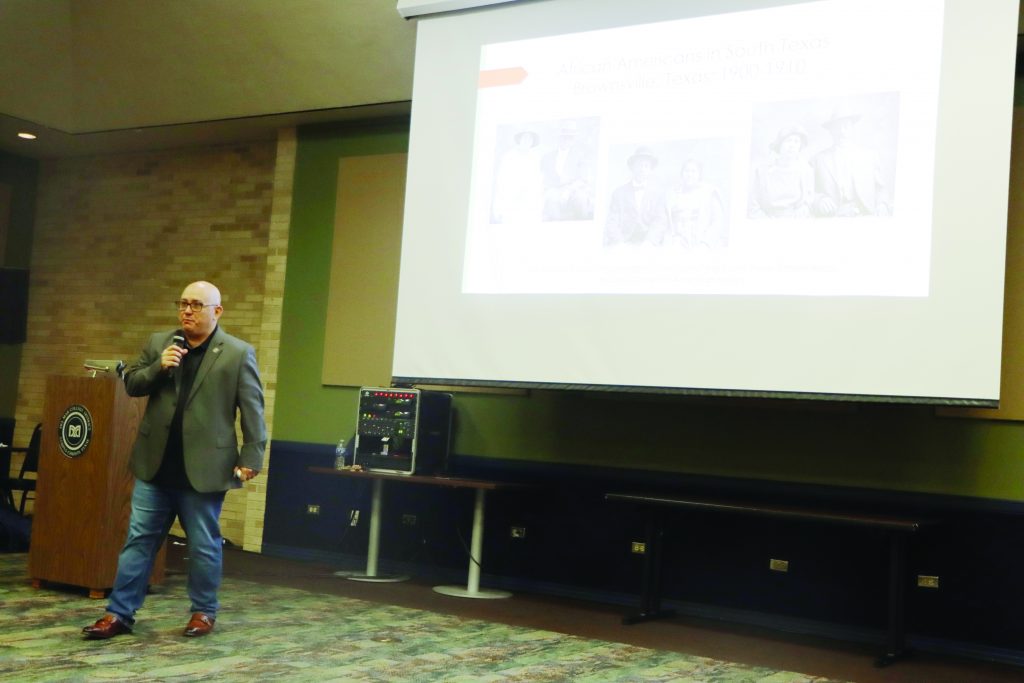
Porres was known to the people as a skilled barber and surgeon, healer of animals and took care of the poor. He was also a Spanish, African and Native decent.
Music and movies are another way African and Mexican culture united.
Rodriguez explains a few bands with demonstrations of their videos revealing each musician to their own styles with a mixture of black and brown culture.
“Music. What you might not know is that black and brown folks have been dancing and singing together since the beginning of time,” Rodriguez said.
With bands such as El Compo Negro, out of Compton, an ’80s popular band called Culturas, Sarah La Morena, who was adopted by a family from Zacatecas, Mexico, Eartha Kitt, who played Cat Women in the ’60s, and Abel Makkonen from The Weekend, were all African descent with Spanish songs that were big hits.
“This is Marcus Daniels from Round Rock, Texas,” Rodriguez said as he presented an African-American Tejano singer.
Rodriguez explains in Daniels’ video the use of not only Tejano sound but also both Latinos and African Americans wearing zoot suits and dancing to the music with low riders in the backdrop.
“…zoot suit culture was part of the Latino and black culture. So is the low rider culture,” Rodriguez said.
For the presentation, called From Slavery to Snoop, Rodriguez ended with a music video made with Snoop Dog.
“Of course, I am a huge Snoop guy. Snoop has been doing this for a while. He’s part of the Latino culture…Snoop decided to do this song with Becky G called Que Maldicion,” Rodriguez said.
“Que Maldicion” is roughly translated to “What a curse.”
This song is a story about a man who recently mourns the death of his wife. The song portrays the couple in childhood and their forbidden love because she is Black and the boy is Mexican.
Rodriguez then opens the floor to questions to which Rodriguez explains his percentage to Latino, Indigenous and Black descent.
“Why it seems like, in the Hispanic culture, they look at Caucasians as higher and the Black people as ‘dirty’?” asked Ruben Butler III, who’s part of the DMC chapter of the Texas Association of Black Personnel in Higher Education.
“We’ll call that colorism. In the Spanish Colonial Period, you had about 40 casts. The higher number you are, the lighter skin you were…Colorism has been highly valued…it’s been wrongly valued. We see it in our own community. People want to get lighter and lighter…They see that being affiliated with white people makes you look better…In the movie of Wakanda, this man appeared very dark complected. People in the Mexican Media asked, ‘Why did they have to cast a dark Indian like that…this is not a representation of Mexico.’ To which Rodriguez response, “The hell it is. That is Mexico.” Laughs Rodriguez, “Their own community turns on themselves in values and ideas.” Rodriguez concludes.
Evelyn Lawson, a visitor to DMC, asked a question about race.
“I don’t let my kids get comfortable saying the N- word. Is there any way to change how the community thinks its ok to use the N- word?” said Lawson.
“This is one of the toughest things…One of the things we must do as educators is teach the students what this word means, where it came from. Drake uses the word over and over. It bothers even me,” Rodriguez said.
Rodriguez recalls a movie called “Malibu’s Most Wanted,” where the main character, Jamie Kennedy, is taken to the ‘’hood’’ and is shown how real life can be outside of the main character’s rich life.
“There’s one scene in the movie where they’re rapping and the white kid, Kennedy, is about to use the N- word and everyone stops and looks at him.” Rodriguez said. “…in the History that word was a word of hate. We have to educate early.”
A DMC student, Alvin Lawson, asked why isn’t there a lecture for Black History every semester at DMC.
Beverly Cage, Director of Student Leadership and Campus life responded,
“I would say if it’s something you’re interested in, I would give you an email. This is the only way were going to have this course at Del Mar. If the DMC students voice their opinions about wanting this here (Black History Studies). I remember when it was first offered. They offered it at various times and not many students joined,” Cage said.
Janella Rodriguez, Karena Luis and Celeste Velasquez, all DMC students with a major in nursing, attended the lecture. They all agreed that in joining the lecture they learned a lot they never learned in their history courses.
“I didn’t know about CRT. We were like, what is that, so we looked it up,” Luis said.
“When I was little, my grandpa owned a Store, predominantly black people lived around the area. They would come in and when one of them spoke Spanish I was taken back. Now that I’m older now I know he was Cuban,” Rodriguez said.
“I like how he, Rodriguez, brought out more than just the African-American side. I like how he said it’s the stigmatism when he said, ‘Why is a Latino man talking about African History’ you know?” Velasquez said.


